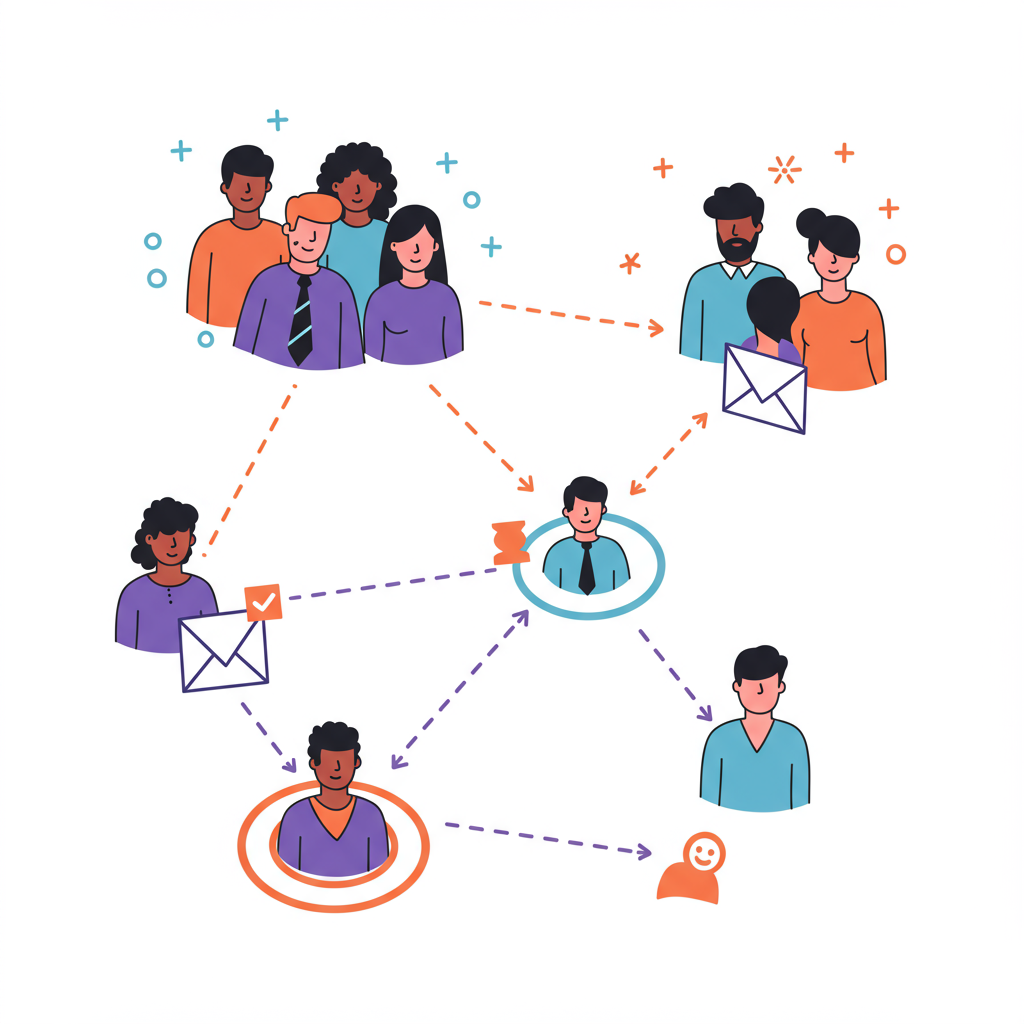Transform your generic email blasts into personalized conversations that drive sales and build lasting customer loyalty.
Hey there, fellow Shopify merchants! I’m here today to talk about something that can truly revolutionize your email marketing efforts and, by extension, your entire e-commerce business: list segmentation.
In the bustling world of online retail, simply sending out generic emails to your entire customer base is like casting a wide net in the ocean hoping for a specific fish – you might catch something, but it’s far from efficient or effective.
Your customers are unique, with diverse needs, preferences, and purchasing behaviors. Treating them all the same in your email campaigns is a missed opportunity to connect on a deeper, more personal level.
This is where email list segmentation comes into play. It’s the strategic process of dividing your email subscribers into smaller, more targeted groups based on shared characteristics or behaviors.
Think of it this way: instead of one-size-fits-all, you’re moving towards a tailored approach, ensuring that the right message reaches the right person at the right time.
For us Shopify store owners, this isn’t just a good idea; it’s an absolute necessity. Our platform provides a wealth of customer data that, when leveraged correctly, can unlock incredible growth.
So, why is segmentation so crucial for your Shopify store? Firstly, it dramatically improves your email open rates and click-through rates. When an email feels relevant, people are far more likely to engage with it.
Secondly, it leads to higher conversion rates. Targeted messages resonate more deeply, guiding customers towards products they’re genuinely interested in, rather than overwhelming them with irrelevant offers.
Thirdly, segmentation fosters stronger customer relationships and loyalty. When customers feel understood and valued, they’re more likely to become repeat buyers and advocates for your brand.
And finally, it helps reduce unsubscribe rates and spam complaints. Irrelevant emails are annoying; relevant ones are welcomed.
Now, let’s dive into the practical side: what kinds of segments can you create? The possibilities are vast, but here are some common and highly effective categories.
**Demographic Segmentation:** This involves grouping subscribers by age, gender, income, or location. For example, if you sell clothing, you might segment by gender to send specific collections.
**Geographic Segmentation:** Useful for local businesses or for promoting region-specific sales, events, or shipping offers. Imagine sending a special discount to customers in a specific city where you’re having a pop-up shop.
**Behavioral Segmentation:** This is incredibly powerful for Shopify stores. It segments users based on their actions (or inactions) on your website or with your emails.
Examples include:
**New Subscribers:** Welcome series, brand story.
**Abandoned Cart Users:** Reminders, incentives to complete purchase.
**Browse Abandonment:** Customers who viewed products but didn’t add to cart.
**Past Purchasers:** Segment by product category purchased, frequency, or recency of purchase.
**Engaged Customers:** Those who frequently open emails and click links.
**Disengaged Customers:** Those who haven’t opened emails in a while (re-engagement campaigns).
**Purchase History Segmentation:** This is a goldmine. You can segment by:
**First-time buyers:** Offer a special discount on their second purchase.
**Repeat buyers:** Reward loyalty, introduce new products related to past purchases.
**High-value customers (VIPs):** Exclusive access, early bird offers.
**Customers who bought a specific product:** Cross-sell or upsell related items.
**Engagement Level Segmentation:** This helps you tailor your communication frequency and content. Highly engaged customers might receive more frequent updates, while less engaged ones might get re-engagement campaigns.
**Product Interest Segmentation:** Based on products they’ve viewed, added to wishlists, or previously purchased. This allows for highly personalized product recommendations.
**Customer Lifecycle Stage:** Are they a lead, a new customer, a loyal customer, or at risk of churning? Each stage requires a different communication strategy.
So, how do you actually implement this with Shopify? While Shopify’s native email marketing features are growing, for advanced segmentation, you’ll typically integrate with a dedicated email marketing platform.
Popular choices for Shopify merchants include Klaviyo, Mailchimp, Omnisend, and ActiveCampaign. These platforms seamlessly integrate with your Shopify store, pulling in all the crucial customer data.
Once integrated, these tools allow you to set up automated flows and campaigns based on the segments you define. For instance, an abandoned cart flow triggers automatically when a customer leaves items in their cart.
My advice is to start simple. Don’t try to create 50 segments overnight. Begin with 3-5 key segments that you know will have a significant impact, like abandoned carts, new subscribers, and repeat purchasers.
As you get comfortable, you can then layer on more sophisticated segmentation strategies. Always test your segments and analyze the results to see what works best for your audience.
Remember, the goal isn’t just to send more emails, but to send *better* emails. Segmentation empowers you to do just that, transforming your email marketing from a generic broadcast into a series of meaningful conversations.
What do you think about this approach to email marketing? Have you tried segmentation in your Shopify store, and what were your results? I’d love to hear your thoughts!
By embracing email list segmentation, you’re not just optimizing your marketing; you’re building stronger, more profitable relationships with your customers. It’s an investment that pays dividends in increased sales, improved customer loyalty, and a healthier bottom line.
So, take the leap. Start segmenting your Shopify email list today, and watch your engagement and conversions soar. Your customers, and your business, will thank you for it.






